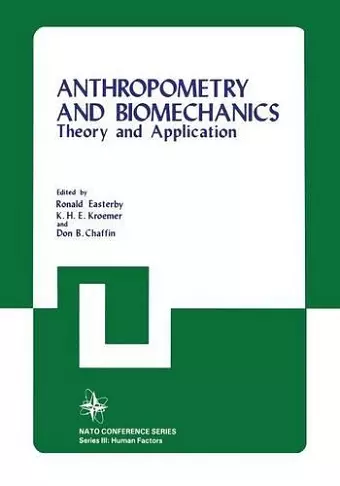Anthropometry and Biomechanics
Theory and Application
Format:Paperback
Publisher:Springer-Verlag New York Inc.
Published:18th Feb '12
Currently unavailable, and unfortunately no date known when it will be back

Springer Book Archives
Assessment of the physical dimensions of the human body and application of this knowledge to the design of tools, equip ment, and work are certainly among the oldest arts and sciences. Hypocrates (about 460-377 BC) taught that there are four temperaments (actually, body fluids) represented by four body types.Assessment of the physical dimensions of the human body and application of this knowledge to the design of tools, equip ment, and work are certainly among the oldest arts and sciences. It would be an easy task if all anthropometric dimensions, of all people, would follow a general rule. Thus, philosophers and artists embedded their ideas about the most aesthetic proportions into ideal schemes of perfect proportions. "Golden sections" were developed in ancient India, China, Egypt, and Greece, and more recently by Leonardo DaVinci, or Albrecht Durer. However, such canons are fictive since actual human dimensions and proportions vary greatly among individuals. The different physical appearances often have been associated with mental, physiological and behavioral characteristics of the individuals. Hypocrates (about 460-377 BC) taught that there are four temperaments (actually, body fluids) represented by four body types. The psychiatrist Ernst Kretchmer (1888-1964) proposed that three typical somatotypes (pyknic, athletic, aesthenic) could reflect human character traits. Since the 1940's, W. H. Sheldon and his coworkers devised a system of three body physiques (endo-, meso-, ectomorphic). The classification was originally qualitative, and only recently has been developed to include actual measurements.
ISBN: 9781468411003
Dimensions: unknown
Weight: unknown
328 pages
Softcover reprint of the original 1st ed. 1982